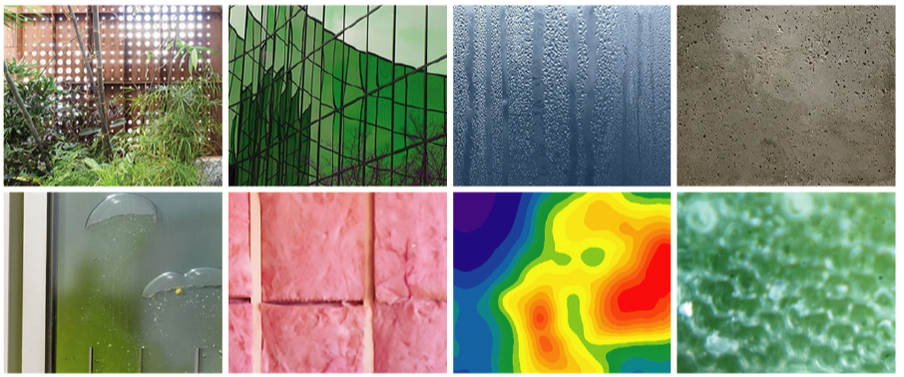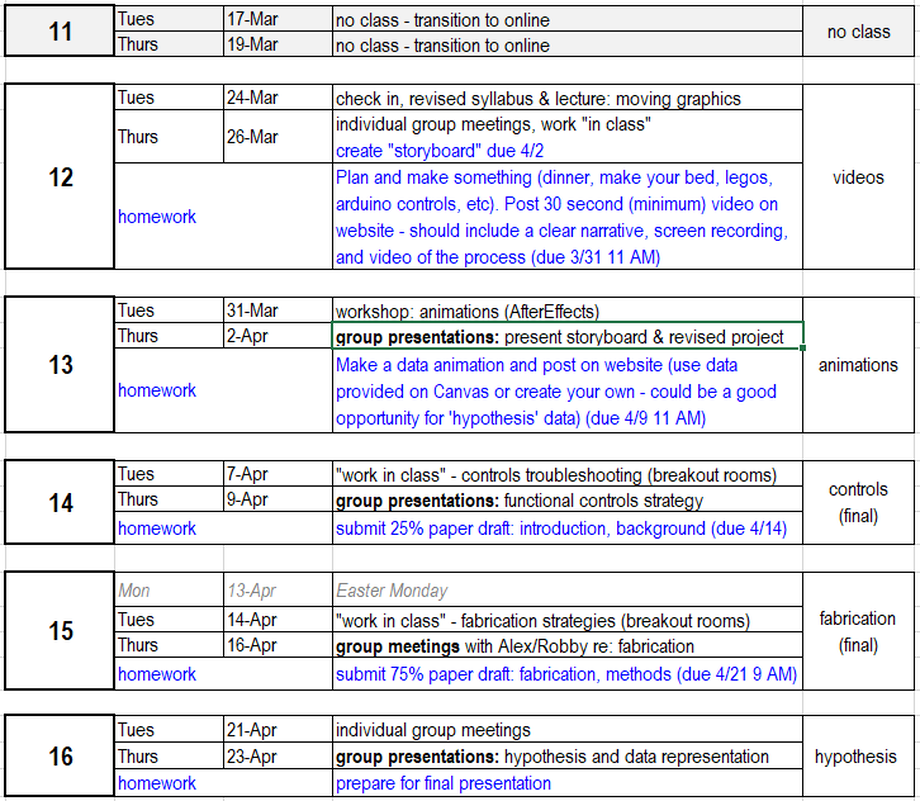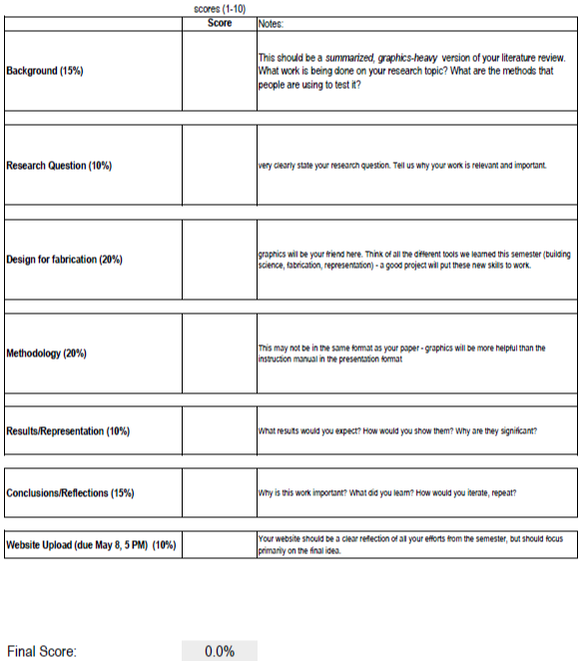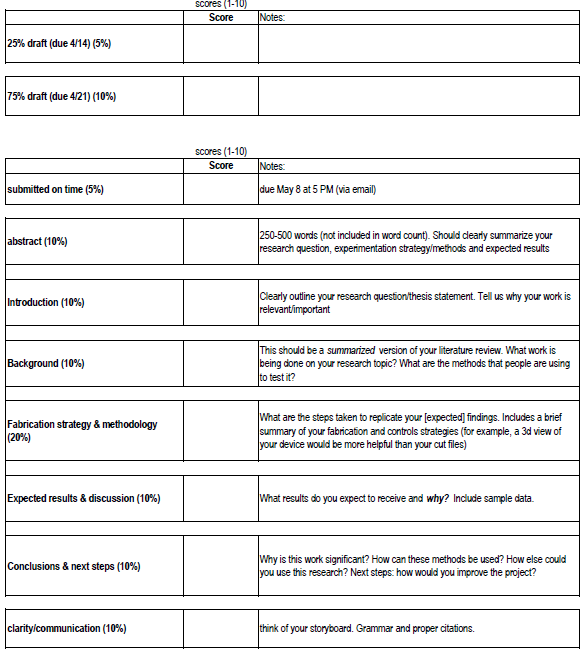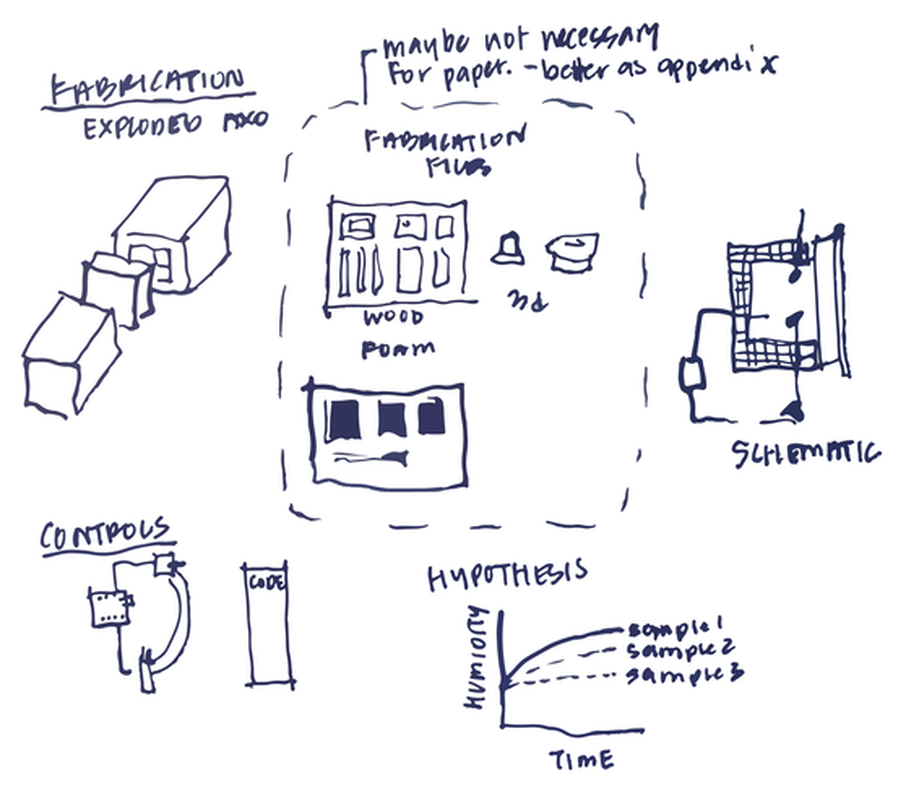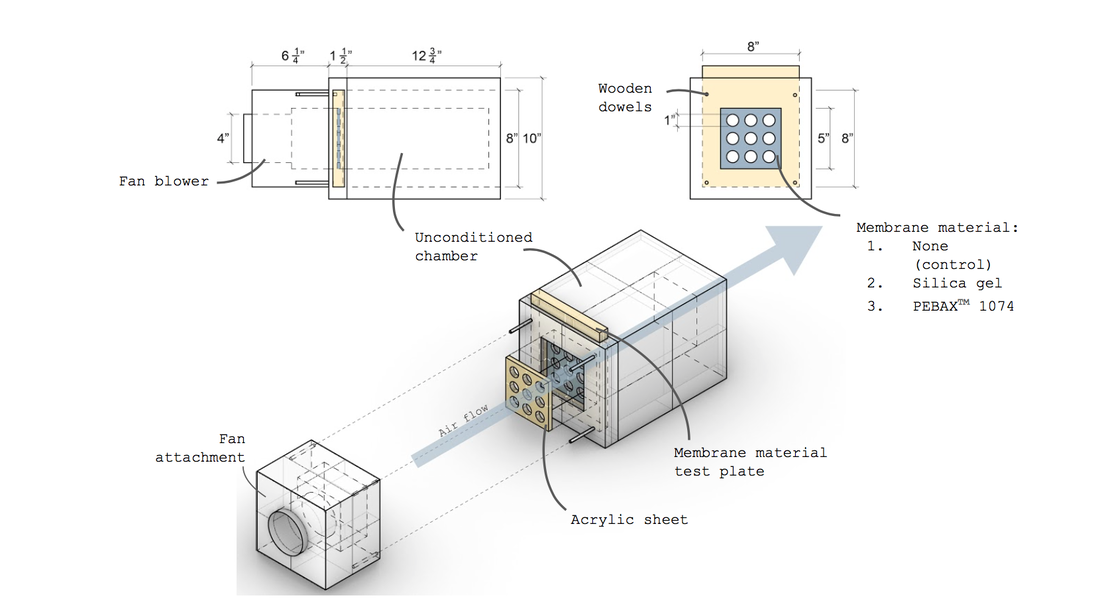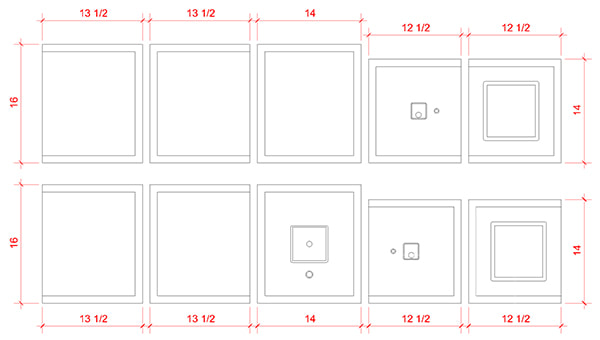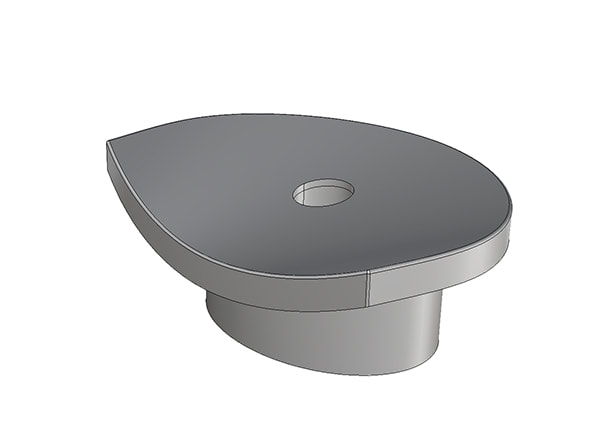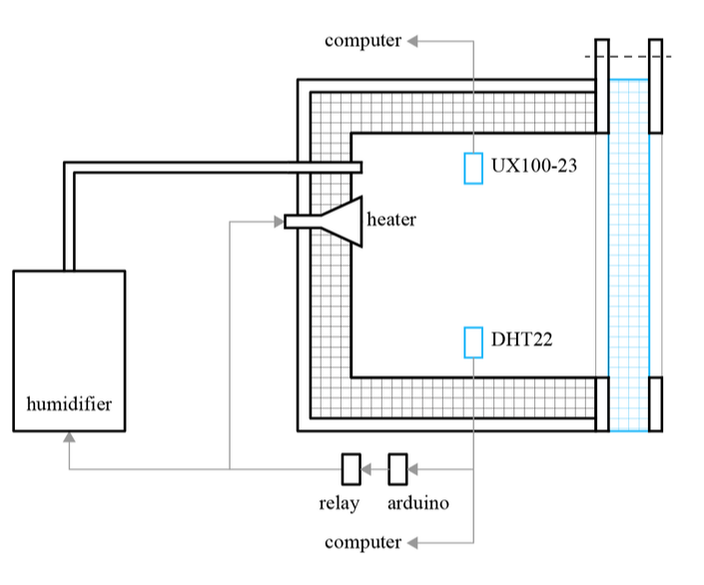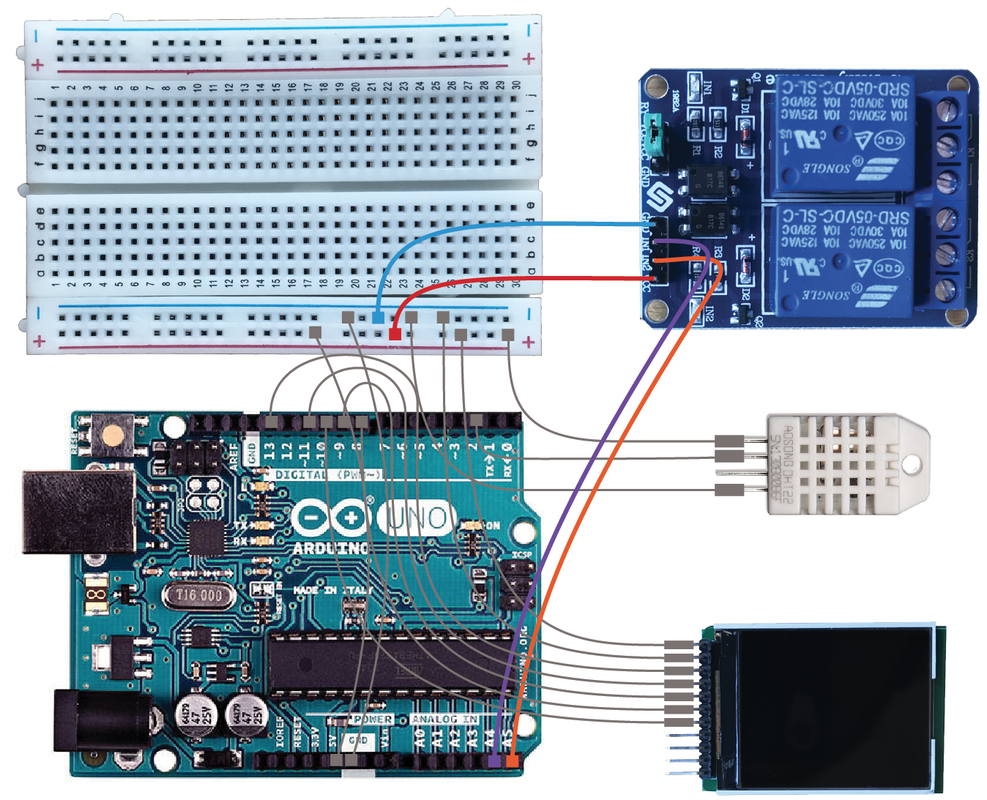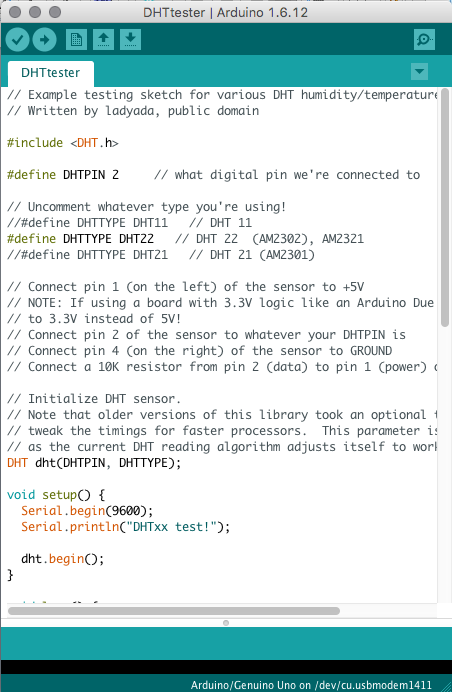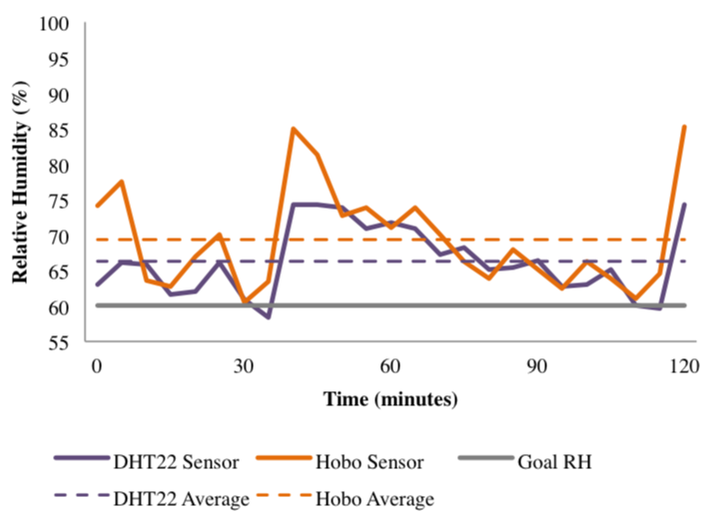[REVISED] Course Syllabus
Format:
The course will be divided into a series of lectures, workshops and review sessions. Students will have access to monitoring equipment and thermal imaging as needed.
Tuesday, 11:30 – 12:45 PM: lectures, group working sessions
Thursday, 11:30 – 12:45 PM: group meetings/presentations
The latter half of the semester was largely dedicated toward working in the shop with your team. We will still dedicate time to focused group work on specific topics via breakout rooms in WebEx, however students will be expected to update the larger group regularly.
Learning Objectives
- Demonstrate a thorough understanding of the chosen topic with the intent of communicating this knowledge by visual means.
- Establish a broad understanding of relevant work related to the topic (precedent research and literature review)
- Demonstrate the ability to design for fabrication and experimentation.
- Establish clear and replicable methods for conducting experiments.
Grading & Evaluation:
You have already completed 30% of graded assignments (in italics). An additional 25% is ongoing (website maintenance and participation).
Research
- Abstract 5%
- Literature review 5%
- Regular website updates 10%
Participation/attendance 15%
Class Presentations - we'll be reducing the number of formal presentations (omitting the data presentation). These points will be assigned to the four small presentations/updates that you will give to the class.
- Design proposal 10%
- Mockup 10%
- Class updates 20%
- April 2 - revised project/storyboard
- April 9 - functional controls strategy
- April 16 - fabrication strategy
- April 23 - hypothesis and expected data
- Final 10%
Final paper (2500-3500 words) 15%
Course Schedule (subject to change):
Final Presentation: May 5, 11-1:30 PM (via WebEx)
Final Papers due: May 8, 5 PM (via Email)
Final Papers due: May 8, 5 PM (via Email)
Final Presentation meeting link:
https://uncc.webex.com/uncc/j.php?MTID=m38717d136ccbd7fa04cb6937333bdf5e
Your paper should be 2500-3500 words and submitted via email
[suggested] Paper Outline and Project Storyboarding
•Introduction (context) - why? who cares?
•Background (existing work in the field) - summarized literature review
•Design for fabrication
–Device
–Controls, code
–Metering equipment
•Methods
–Preconditioning
–Controls
–Procedures
•Hypothesis
•Discussion/Reflection
•Conclusion
•Background (existing work in the field) - summarized literature review
•Design for fabrication
–Device
–Controls, code
–Metering equipment
•Methods
–Preconditioning
–Controls
–Procedures
•Hypothesis
•Discussion/Reflection
•Conclusion
